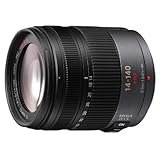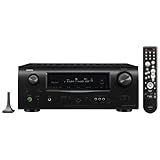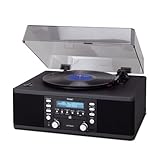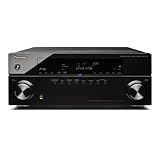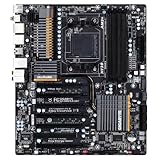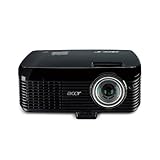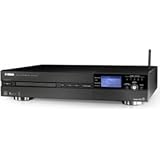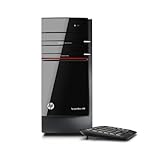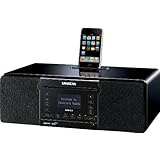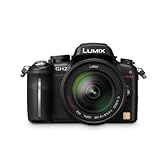
Average Reviews:

(More customer reviews)Now I know that is a bold statement and I intend to back it up. However, before I do I need to explain what I mean. I am not saying this camera is the best at everything or even anyone thing. Cameras that are the best at something are usually specialized beasts that can really only do that one thing well. What I am talking about is a camera the is so good in so many categories that it can joyfully be used for just about and photographic or video graphic purpose you may have. The GH2 is that camera.
Now that is out of the way we can get to the meat and potatoes of the review. I shoot mostly Nikon and Panasonic and I primarily shoot stills. I dabble in Video but do not proclaim myself any sort of an expert. I can say if you are looking for the best handling combo/cam with the most features then the GH2 is the one you want. Panasonic went out of its way to make this a video camera so that was its primary focus with this camera. However, there are lots of payoffs for the stills part of this camera so this is the best m4/3 stills camera by a long shot also. I will also say that the hard core video market is a niche market compared to the stills market because shallow depth of field video is hard to shoot properly and hard to edit. The average home user has neither the time nor inclination to properly storyboard and shoot this type of video. However, with that said, it is really nice to be able to shoot stills and video. And basic home videos are a snap to shoot with this camera; much more so than any other DSLR with the exception of the Sony SLT A55/33 which at least has a fast auto focus also. To shoot nice home movies, put the mode dial to iA, press the red button, and you are shooting video.
This camera is the next generation of cameras as it successfully blends the advantages of Point and Shoot cameras with the benefits of DSLRs and creates and incredibly small and powerful camera. Listed below are some of the benefits and weakness you get from this next gen camera.
What's Hot
The handling on the GH2 is bar none the best handling "DSLR" on the market. WIth smart controls, great layout, fast autofocusing, swivel screen, full time double live view, etc. Even with how good the D7000 is, it still feels clunky after using the GH2. I get into most of the details of this down below so I don't want to repeat the info here. What I will say here is that you can do things with this camera you couldn't hope to do with DSLRs and you can generally set up your photo parameters much faster with this camera. The menus on the GH2 are not very good. However, the actual camera controls are so good you will rarely even need to use the menus.
Program Shift - Forget using Aperture priority with this camera. You can leave the camera in Program mode. With program shift you can change the aperture setting and thus the shutter speed while in program mode. To do this you press the shutter release button down half way to set the exposure. Then if the numbers are in yellow you just rotate the rear dial switch to change aperture. Want a shallower depth of field or faster shutter speed, then dial in a bigger aperture (smaller number). If the numbers are not in yellow then you are currently in exposure compensation mode. All you have to do is click the rear dial switch and then rotate it. Snap. What a neat feature.
Extra Tele Convert (ETC) Mode in Video - If you shoot video you are going to love this. This is even great for home/casual video shooters. The GH2 has a 16mp sensor but like every other consumer combo/cam shoots 2K video. That means the picture is usually down-sampled to make it 2K. This has some pluses and minuses. Enter the GH2. With the ETC mode the camera uses only 2K of the sensor. This gives you an extra 2.6x crop factor. Which means your total crop factor is now 5.2x. So that brand spanking new 100-300mm you just got is now 520-1560mm with no light loss. If you put a Nikon 135mm f2 then you now have a 702mm f2! lens for video. There are some drawbacks for using ETC also but they are pretty negligible.
Auto focus - the auto focus on the GH2 is twice as fast as the GH1 and the GH1 was the fastest of previous generation. I have seen some very knowledgeable photographers saying it is as fast as mid-level DSLRs. While I think it is supposed to be a complement I don't think it is a very good comparison. I find the focus speed of DSLRs has most to do with what lens you have on. There are some lenses that focus slowly on even a D3. All of the lenses I have used on the GH1 focus very quickly except the 45-200mm. That lens tends to be my slowest. Non of the lenses I have focus as fast as a 70-200mm f/2.8 but the rest of them focus as fast if not faster than any of the other Nikon lenses I own. The best I can say about this is that you won't notice the focus speed on the GH2 as it is fast enough to get out of your way.
Smaller lighter camera - I recently went on a trip to Egypt and carried nothing but my Panasonic gear. Two camera bodies, 5 lenses, 1 flash, an iPad, and camera bag. Total weight 10lbs (3lbs of that was the bag itself). My Nikon D300 and 14-24mm lens would have weight more just by themselves (I was carrying the Panasonic 7-14mm so I did have wide covered)
Swivel Screen with full-time live view - You won't know what you are missing until you become used to this and how well it works. Want to reach up as high as you can and shoot down; No problems. Want to get as low as possible but can't lay down in the mud or water; No problem. Want to take a picture of you and your daughter but there is nobody around; No problem. Turn the screen around aim the camera at you and use the screen to frame. Something that makes photos interesting is showing the viewer something from a perspective they don't often see. The swivel screen actively encourages this. The other thing the swivel screen does is make shooting from a tripod a joy. Because of how small and light this camera is you can use a much smaller tripod. I have a 3lb tripod that can support 7lbs. Also, you can now set you camera up in all sorts of whacky positions and just rotate the screen to be able to frame and focus. Very nice. Also, with no mirror to flip up you don't have to worry about any vibrations.
Touch Focus implemented as slick as on the iPhone. As I mentioned above you can shoot from many strange angles because you can swivel the screen to almost any angle. However, if the camera did not focus on what you wanted it would be hard to change it. Now you can simply touch the screen on what you want to focus and presto it will focus on that. The GH2 is worth the price just for that.
WYSIWYG - What you see is what you get. Since you are looking at either the screen or the beautiful EVF, you are seeing what the sensor sees. With a DSLR you are seeing what the lens sees. This is an important difference. If you forgot to reset your WB or Aperture or any camera setting, you will see it before you shoot. On a DSLR you would have no idea until you looked at the pictures. Also, if it is a low light situation, the EVF will start to noise up and start to lose some of its smoothness. This is a warning to you that you need to use flash or a tripod. With a DSLR the viewer becomes darker but you don't get a very good visual cue of how your camera is seeing it. For me the most brilliant thing with WYSIWYG is setting exposure. Because I can see what the camera is doing with exposure, I usually leave the camera in P mode. Then I change the exposure by changing where I aim the camera, lock the exposure and then reframe for the subject. It works something like this. I am trying to take a picture of a person but the exposure is picking up to many bright objects, thereby dimming my subject. So, I aim the camera to include more dark areas while keeping my subject in the shoot. Then I press the shutter release button down half way to lock the exposure and focus. Then I reframe back to the original photo. This works so quickly you can try several exposures in less time than you could set one with the exposure compensation dial (which is actually exceedingly well executed on this camera also.) In a DSLR, since you don't see the exposure, you are just basically guessing at what you want and then shooting, view the photo and fix. Much slower.
Shoot about any lens you want - The distance from the lens to sensor is so short, that with the appropriate adaptor, you can put just about any lens you want on this camera. Canon, Nikon, Leica, Voigtlander, Pentax, Sony, you can use them all. Generally you need to use lenses which have aperture rings. Additionally, you do lose autofocus but there are many instances where this just doesn't matter. Macro photography is a good example. You can fit a Nikon 200mm f/4 onto the GH2 and then either get a 2:1 reproduction or a 1:1 reproduction with twice the depth of field. It is like putting on a teleconverter without the loss of light and depth of field. Brilliant.
Great for Newbies - All DSLRs are easy for anyone to use and the GH2 is no exception. The great handling makes the GH2 better for newbies in my opinion. Anyway, all you have to do is put the camera into iA mode and start shooting. This camera gets the subject correct more often then not and will make you look good. In dynamic situation, I actually use the iA mode quite a bit. I do this because the camera is good a recognizing as scene as a person, flower, scenery, etc. The camera then instantly sets numerous setting to make that scene look as good as possible. If you tried to do it yourself it could take a few minuets to set and then a few to set back. Or even worse you forget to reset it and you next pictures look bad. If I have time,...Read more›
Click Here to see more reviews about:
Panasonic Lumix DMC-GH2 16.05 MP Live MOS Interchangeable Lens Camera with 3-inch Free-Angle Touch Screen LCD and 14-140mm HD Hybrid Lens (Black)One of the first cameras in the world to offer an 3D interchangeable lens, Panasonic's Lumix GH2 functions as a dual SLR and 3D device that has more than 10 interchangeable lens options. Shooting with a 10x zoom with a high-speed burst rate at 5fps (16MP) or 40fps, it captures movement with precise, high-resolution clarity. Movie capturing, LCD touch screen, and a 14-140mm lens are among the coveted features included.
 Get 4% OFF
Get 4% OFF
Click here for more information about Panasonic Lumix DMC-GH2 16.05 MP Live MOS Interchangeable Lens Camera with 3-inch Free-Angle Touch Screen LCD and 14-140mm HD Hybrid Lens (Black)





